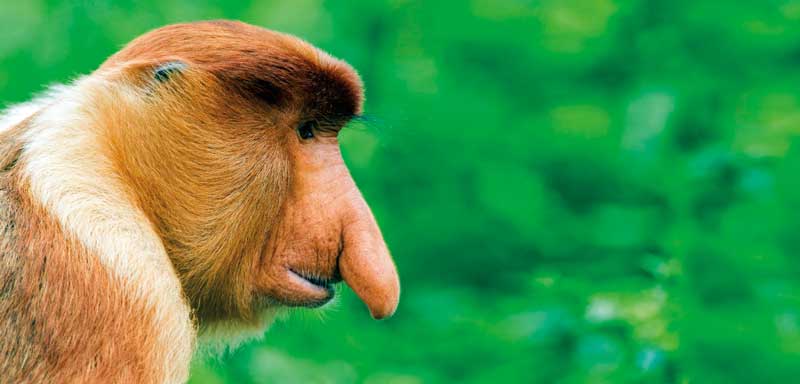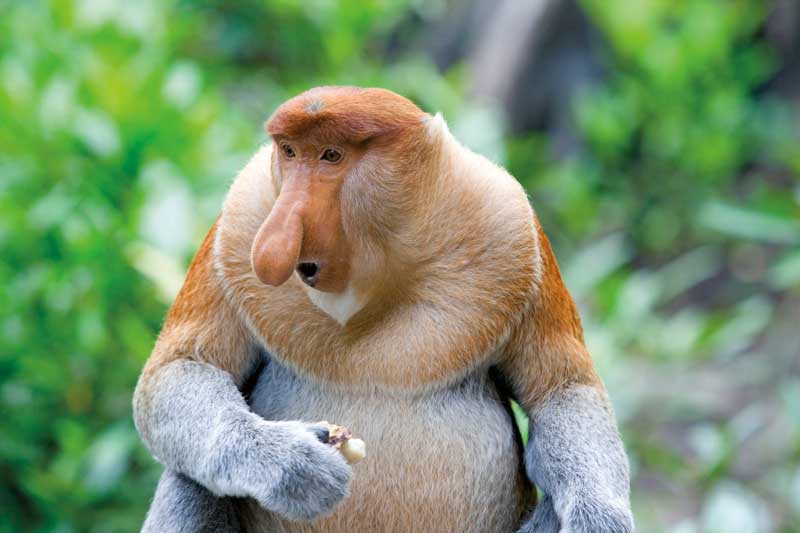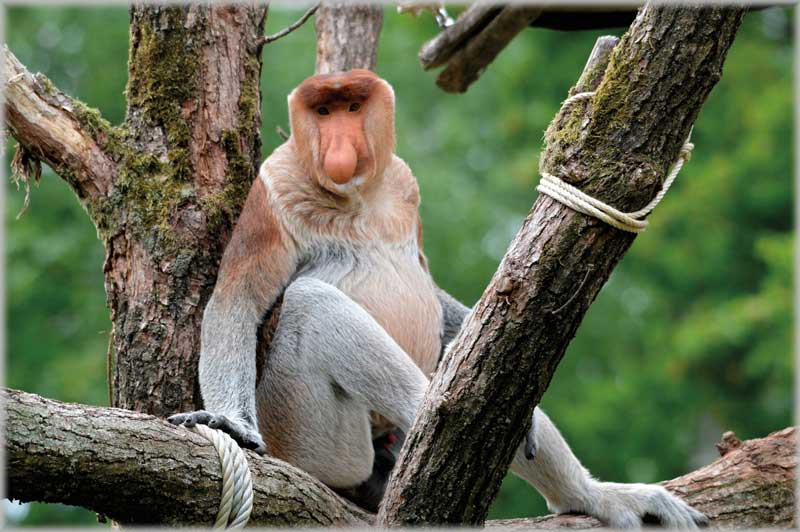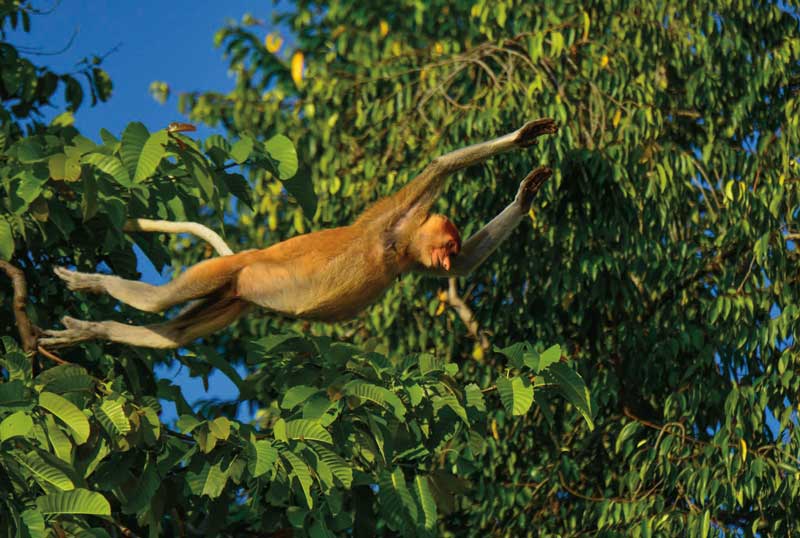A unique and special inhabitant of the mangroves, rainforests and riverbanks of Brunei is undoubtedly the proboscis monkey, a species endemic to the island of Borneo.
Its distinctive large, pendulous nose (hence its scientific name, Nasalis larvatus - nasalis comes from the Latin for nose), which is especially prominent in males, can reach up to 4-inches in length and hang over its mouth. Although the exact function of this prominent organ is not fully understood, it is believed to play an important role in communication and sexual selection by attracting females.
In addition to its nose, the proboscis monkey is distinguished by its reddish-brown fur, which pales on the abdomen. Males weigh up to 53.9-lb., while females rarely exceed 26.5-lb.; they are diurnal and spend most of their lives in trees. They live in social groups of varying sizes, usually consisting of a dominant male, several females and their young.
Their diet is based mainly on leaves, fruits and seeds, adapting to the seasonal availability of these resources in the rainforests and mangroves of Borneo.
Safe in Brunei
Fortunately, their habitat remains largely intact in Brunei, largely because the country's oil and gas-based economy reduces the need to clear large areas for agriculture or urban development. As a result, Brunei's forests provide a vital refuge for the proboscis monkey and other species, especially those living in the 136,000-acres Ulu Temburong National Park of pristine rainforest.
Although the orangutan prefers coastal areas and mangroves, protecting inland areas like Ulu Temburong helps maintain the overall health of the ecosystem, which indirectly benefits all species in the region, including the orangutan. Another protected area is the Sungai Liang Forest Reserve, which includes important mangrove habitat where proboscis monkeys find shelter and food.
Bruneian institutions, in collaboration with international organizations, are conducting studies on the ecology and behavior of these primates, and are educating the local population about the importance of the proboscis monkey and its habitat through education and awareness programs. These initiatives aim to foster a sense of pride and responsibility for the conservation of their unique biodiversity, according to Cardiff and Yale Universities, which are conducting studies on the species there.
Sustainable Tourism
As a result of conservation, sustainable tourism has become an important tool for conservation in Brunei. By attracting tourists interested in nature and biodiversity, Bruneians have an alternative source of income and are not dependent on the exploitation of natural resources.
Sites such as the Sungai Liang Forest Reserve and guided mangrove tours give visitors the opportunity to see proboscis monkeys up close in their natural habitat. The government and local businesses are working to ensure that tourism is developed in a sustainable way that minimizes environmental impact.
The main threat to the species is habitat loss due to urban sprawl and infrastructure development. Another factor is climate change, which is affecting mangrove and rainforest habitats. In the rest of the island of Borneo, which is part of Malaysia and Indonesia, it is listed as "vulnerable" by the International Union for Conservation of Nature (IUCN), mainly due to its illegal capture for pets.
Texto: Amura ± Photo: Adobe Stock





